
The Global Risks Report, published by the World Economic Forum with support from Marsh McLennan, highlights the disruptive implications of major risks, including the COVID-19 pandemic, that may reshape our world over the next decade.
The immediate human and economic cost of COVID-19 is severe. It threatens to scale back years of progress on reducing poverty and inequality and to further weaken social cohesion and global cooperation. Job losses, a widening digital divide, disrupted social interactions, and abrupt shifts in markets could lead to dire consequences and lost opportunities for large parts of the global population. The ramifications—in the form of social unrest, political fragmentation and geopolitical tensions—will shape the effectiveness of our responses to the other key threats of the next decade: cyberattacks, weapons of mass destruction and, most notably, climate change.
In the Global Risks Report 2021, we share the results of the latest Global Risks Perception Survey (GRPS), followed by analysis of growing social, economic and industrial divisions, their interconnections, and their implications on our ability to resolve major global risks requiring societal cohesion and global cooperation. We conclude the report with proposals for enhancing resilience, drawing from the lessons of the pandemic as well as historical risk analysis. The key findings of the survey and the analysis are included below.
Global risks perceptions
Among the highest likelihood risks of the next ten years are extreme weather, climate action failure and human-led environmental damage; as well as digital power concentration, digital inequality and cybersecurity failure. Among the highest impact risks of the next decade, infectious diseases are in the top spot, followed by climate action failure and other environmental risks; as well as weapons of mass destruction, livelihood crises, debt crises and IT infrastructure breakdown.
When it comes to the time-horizon within which these risks will become a critical threat to the world, the most imminent threats – those that are most likely in the next two years – include employment and livelihood crises, widespread youth disillusionment, digital inequality, economic stagnation, human-made environmental damage, erosion of societal cohesion, and terrorist attacks.
Economic risks feature prominently in the 3-5 year timeframe, including asset bubbles, price instability, commodity shocks and debt crises; followed by geopolitical risks, including interstate relations and conflict, and resource geopolitization. In the 5-10 year horizon, environmental risks such as biodiversity loss, natural resource crises and climate action failure dominate; alongside weapons of mass destruction, adverse effects of technology and collapse of states or multilateral institutions.
Economic fragility and societal divisions are set to increase
Underlying disparities in healthcare, education, financial stability and technology have led the crisis to disproportionately impact certain groups and countries. Not only has COVID-19 caused more than two million deaths at the time of writing, but the economic and long-term health impacts will continue to have devastating consequences. The pandemic’s economic shockwave—working hours equivalent to 495 million jobs were lost in the second quarter of 2020 alone—will immediately increase inequality, but so can an uneven recovery. Only 28 economies are expected to have grown in 2020. Nearly 60% of respondents to the GRPS identified “infectious diseases” and “livelihood crises” as the top short-term threats to the world. Loss of lives and livelihoods will increase the risk of “social cohesion erosion”, also a critical short-term threat identified in the GRPS.
Growing digital divides and technology adoption pose concerns
COVID-19 has accelerated the Fourth Industrial Revolution, expanding the digitalization of human interaction, e-commerce, online education and remote work. These shifts will transform society long after the pandemic and promise huge benefits—the ability to telework and rapid vaccine development are two examples—but they also risk exacerbating and creating inequalities. Respondents to the GRPS rated “digital inequality” as a critical short-term threat.
A widening digital gap can worsen societal fractures and undermine prospects for an inclusive recovery. Progress towards digital inclusivity is threatened by growing digital dependency, rapidly accelerating automation, information suppression and manipulation, gaps in technology regulation and gaps in technology skills and capabilities.
A doubly disrupted generation of youth is emerging in an age of lost opportunity
While the digital leap forward unlocked opportunities for some youth, many are now entering the workforce in an employment ice age. Young adults worldwide are experiencing their second major global crisis in a decade. Already exposed to environmental degradation, the consequences of the financial crisis, rising inequality, and disruption from industrial transformation, this generation faces serious challenges to their education, economic prospects and mental health.
According to the GRPS, the risk of “youth disillusionment” is being largely neglected by the global community, but it will become a critical threat to the world in the short term. Hard-fought societal wins could be obliterated if the current generation lacks adequate pathways to future opportunities—and loses faith in today’s economic and political institutions.
Climate continues to be a looming risk as global cooperation weakens
Climate change—to which no one is immune—continues to be a catastrophic risk. Although lockdowns worldwide caused global emissions to fall in the first half of 2020, evidence from the 2008–2009 Financial Crisis warns that emissions could bounce back. A shift towards greener economies cannot be delayed until the shocks of the pandemic subside. “Climate action failure” is the most impactful and second most likely long-term risk identified in the GRPS.
Responses to the pandemic have caused new domestic and geopolitical tensions that threaten stability. Digital division and a future “lost generation” are likely to test social cohesion from within borders—exacerbating geopolitical fragmentation and global economic fragility. With stalemates and flashpoints increasing in frequency, GRPS respondents rated “state collapse” and “multilateralism collapse” as critical long-term threats.
Middle powers—influential states that together represent a greater share of the global economy that the US and China combined—often champion multilateral cooperation in trade, diplomacy, climate, security and, most recently, global health. However, if geopolitical tensions persist, middle powers will struggle to facilitate a global recovery—at a time when international coordination is essential—and reinforce resilience against future crises. GRPS respondents signal a challenging geopolitical outlook marked by “interstate relations fracture”, “interstate conflict” and “resource geopolitization”—all forecasted as critical threats to the world in three to five years.
A polarized industrial landscape may emerge in the post-pandemic economy
As economies emerge from the shock and stimulus of COVID-19, businesses face a shakeout. Existing trends have been given fresh momentum by the crisis: nationally focused agendas to stem economic losses, technological transformation and changes in societal structure—including consumer behaviors, the nature of work and the role of technology both at work and at home. The business risks emanating from these trends have been amplified by the crisis and include stagnation in advanced economies and lost potential in emerging and developing markets, the collapse of small businesses, widening the gaps between major and minor companies and reducing market dynamism, and exacerbation of inequality; making it harder to achieve long-term sustainable development.
With governments still deliberating how to pivot away from emergency to recovery, and with companies anticipating a changed business landscape, there are opportunities to invest in smart, clean and inclusive growth that will improve productivity and delivery of sustainable agendas.
Better pathways are available to manage risks and enhance resilience
Despite some remarkable examples of determination, cooperation and innovation, most countries have struggled with aspects of crisis management during the global pandemic. While it is early to draw definitive lessons, this edition of the Global Risks Report reflects on global preparedness by looking at four key areas of the response to COVID-19: institutional authority, risk financing, information collection and sharing, and equipment and vaccines. It then looks to national-level responses—acknowledging the varied starting points for individual countries—and draws lessons from five domains: government decision-making, public communication, health system capabilities, lockdown management and financial assistance to the vulnerable.
However, if lessons from this crisis only inform decision-makers how to better prepare for the next pandemic—rather than enhancing risk processes, capabilities and culture—the world will be again planning for the last crisis rather than anticipating the next. The response to COVID-19 offers four governance opportunities to strengthen the overall resilience of countries, businesses and the international community: (1) formulating analytical frameworks that take a holistic and systems-based view of risk impacts; (2) investing in high-profile “risk champions” to encourage national leadership and international co-operation; (3) improving risk communications and combating misinformation; and (4) exploring new forms of public-private partnership on risk preparedness.
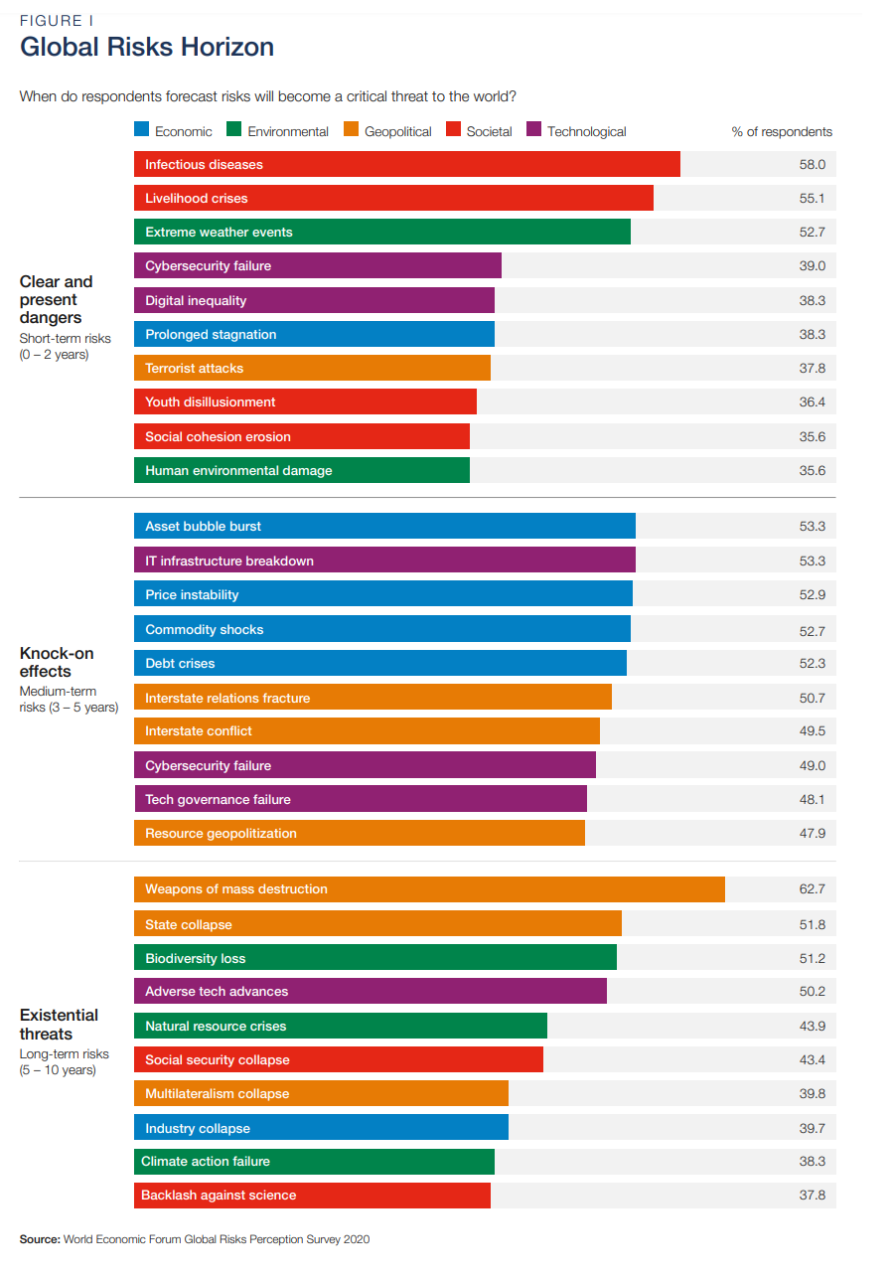
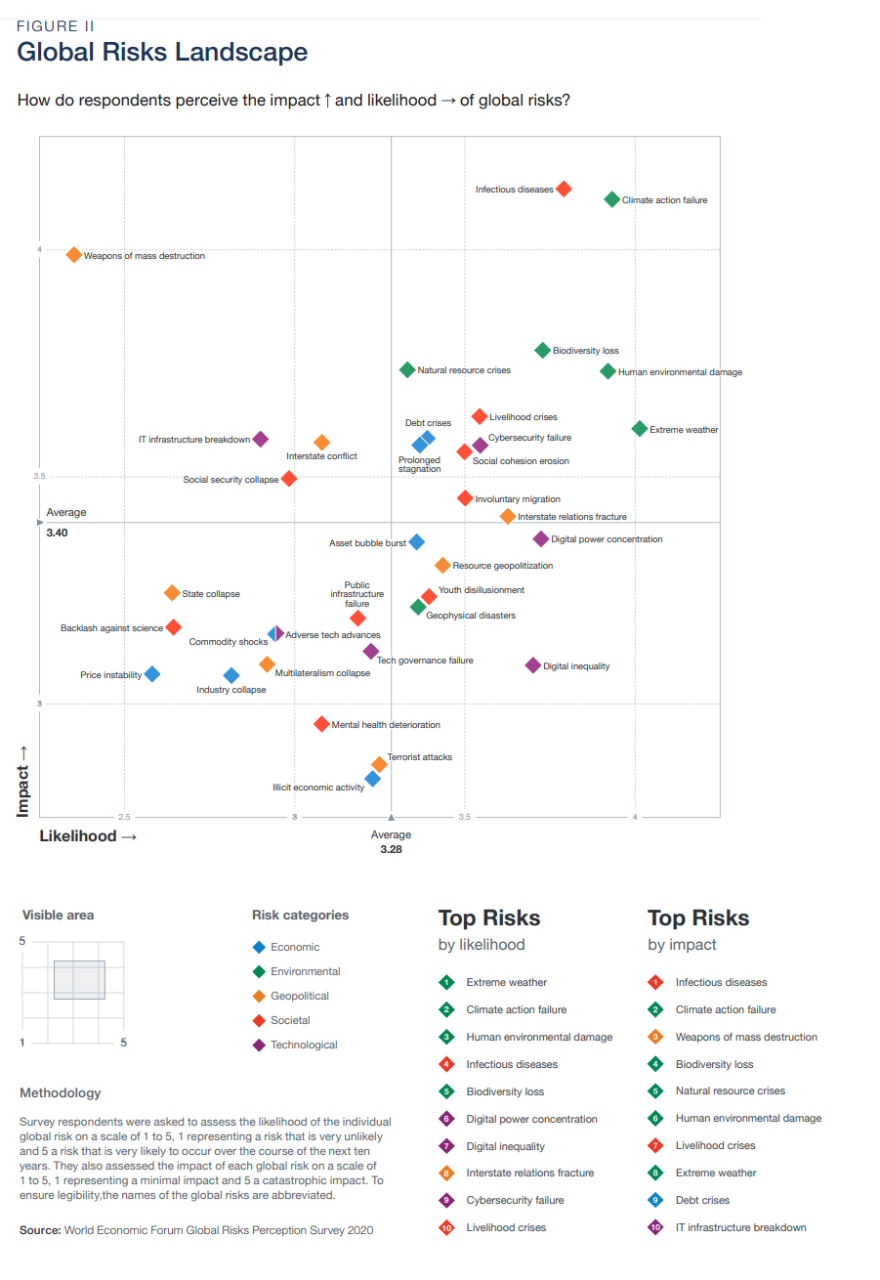
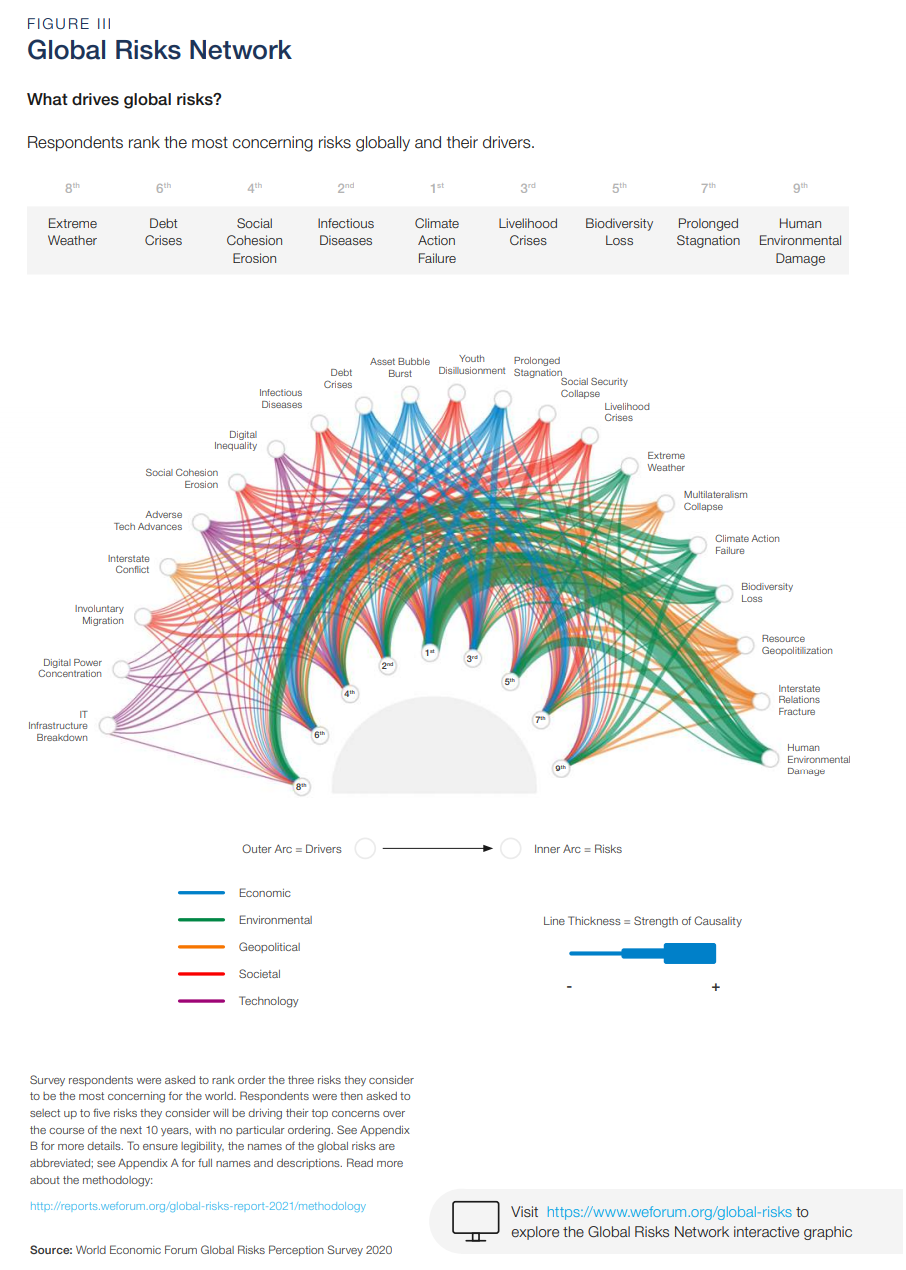
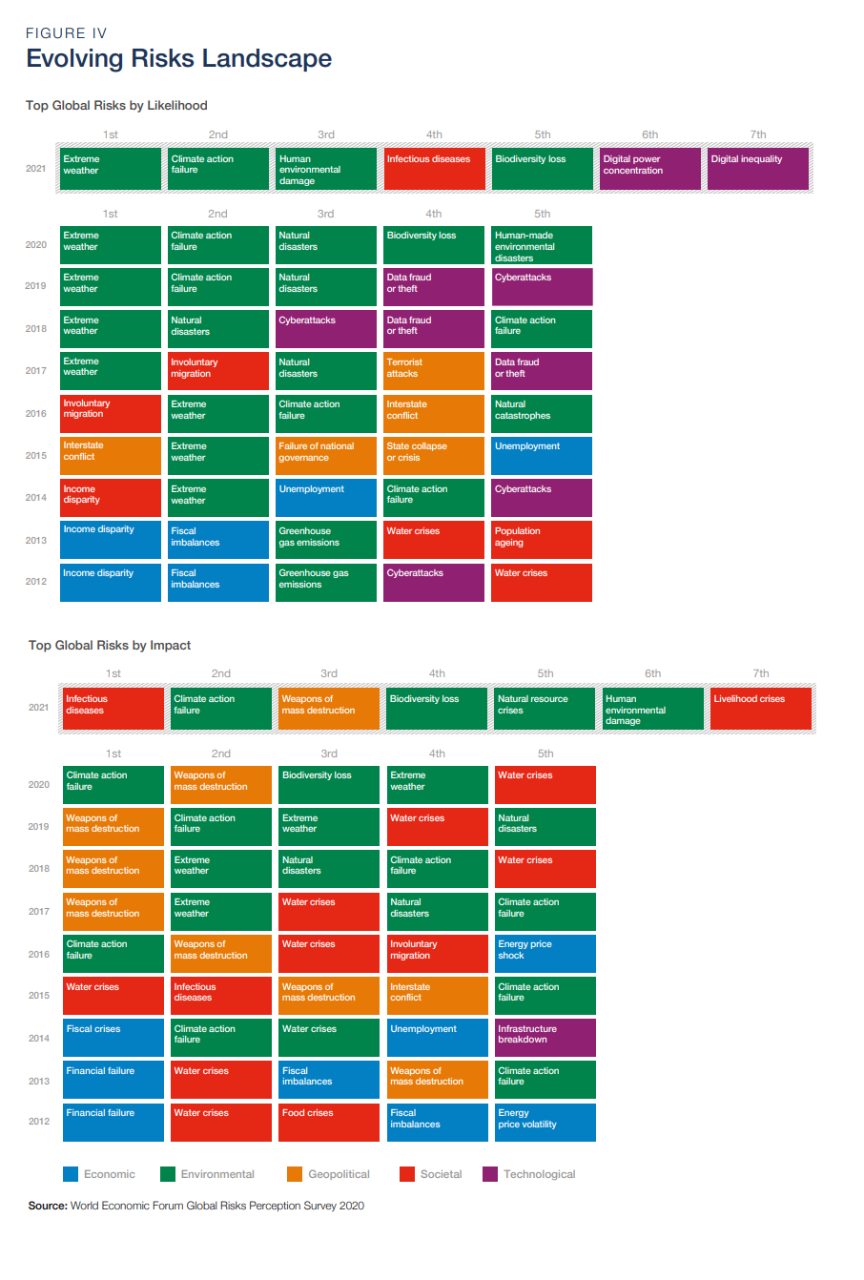
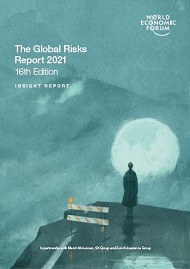
Download the 2021 Global Risks Report
The Global Risks Report, published by the World Economic Forum with support from Marsh McLennan, highlights the disruptive implications of major risks, including the COVID-19 pandemic, that may reshape our world over the next decade.